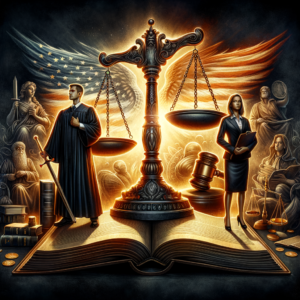Unveiling the Truth: The Shocking Impact of Mandatory Reporting Laws
Mandatory reporting laws are designed to protect vulnerable populations by requiring certain professionals to report suspected cases of abuse or neglect. While these laws aim to safeguard children and other at-risk individuals, their implementation and impact have sparked significant debate. This article delves into the intricacies of mandatory reporting laws, examining their historical evolution, benefits, challenges, and real-life implications, while also proposing recommendations for enhancing these critical legal frameworks.
Understanding Mandatory Reporting Laws: Definition and Purpose Explained
Mandatory reporting laws are statutes that require designated professionals—such as teachers, healthcare providers, social workers, and law enforcement officials—to report any suspicions of child abuse, neglect, or exploitation to the appropriate authorities. The primary purpose of these laws is to ensure that cases of abuse are identified and addressed promptly, thereby protecting vulnerable individuals from further harm. By establishing a legal obligation to report, these laws aim to create a safety net for those who may be unable to advocate for themselves, ensuring that allegations are investigated and that necessary interventions are implemented.
The Historical Context: Evolution of Mandatory Reporting Legislation Over Time
The origins of mandatory reporting laws can be traced back to the 1960s, a period marked by increased awareness of child abuse and neglect in the United States. The landmark case of “The Child Abuse Prevention and Treatment Act” (CAPTA) of 1974 was pivotal in establishing federal guidelines for reporting suspected abuse. Over the decades, states have enacted their own variations of mandatory reporting laws, expanding the scope to include vulnerable adults and other at-risk populations. The evolution of these laws reflects a growing societal recognition of the need to protect individuals who may be unable to defend themselves, as well as a commitment to addressing the systemic issues surrounding abuse and neglect.
Analyzing the Benefits: How Mandatory Reporting Laws Protect Vulnerable Populations
Mandatory reporting laws serve as a crucial mechanism for protecting vulnerable populations by facilitating early intervention in cases of abuse and neglect. By requiring professionals to report suspicions, these laws help ensure that cases are investigated and that victims receive the necessary support and services. Studies have shown that mandatory reporting can lead to increased identification of abuse cases, which in turn can result in timely interventions that mitigate further harm. Additionally, these laws promote a culture of vigilance and accountability among professionals, encouraging them to remain alert to signs of abuse and to act in the best interests of their clients.
The Challenges Faced: Criticisms and Limitations of Mandatory Reporting Systems
Despite their intended benefits, mandatory reporting laws are not without challenges and criticisms. One significant concern is the potential for over-reporting, where professionals may err on the side of caution and report cases that do not meet the threshold for abuse or neglect. This can lead to unnecessary investigations, strain on child protective services, and emotional distress for families. Additionally, critics argue that mandatory reporting can create barriers to trust between professionals and their clients, particularly in marginalized communities where individuals may fear that their concerns will lead to punitive actions rather than support. Furthermore, the effectiveness of these laws can be hampered by inadequate training and resources for mandated reporters, resulting in inconsistent application across different settings.
Case Studies: Real-Life Examples of the Impact of Mandatory Reporting Laws
Numerous case studies illustrate the profound impact of mandatory reporting laws on individuals and communities. For instance, the tragic case of the “Baby Brianna” incident in New Mexico highlighted the failures of the child welfare system and the critical role of mandated reporters. Following the case, reforms were implemented to strengthen reporting requirements and improve training for professionals. Conversely, the case of a teacher who reported suspected abuse led to the timely intervention of child protective services, ultimately saving a child from further harm. These examples underscore the dual nature of mandatory reporting laws: while they can be instrumental in protecting vulnerable individuals, they also reveal the complexities and potential pitfalls inherent in their application.
Future Directions: Recommendations for Improving Mandatory Reporting Practices
To enhance the effectiveness of mandatory reporting laws, several recommendations can be made. First, comprehensive training programs should be established for mandated reporters to ensure they understand their obligations, the signs of abuse, and the reporting process. Additionally, states should consider implementing a tiered reporting system that distinguishes between varying levels of concern, allowing for more nuanced responses to allegations. Furthermore, fostering collaboration between child protective services, law enforcement, and community organizations can create a more integrated approach to addressing abuse and neglect. Finally, ongoing evaluation and research into the outcomes of mandatory reporting laws will be essential to identify best practices and areas for improvement, ensuring that these laws continue to serve their intended purpose effectively.
Mandatory reporting laws play a critical role in safeguarding vulnerable populations, yet their implementation is fraught with challenges and complexities. As society continues to grapple with issues of abuse and neglect, it is imperative to refine these laws and practices to maximize their effectiveness. By addressing the criticisms and limitations of current systems, and by investing in training and resources, we can create a more robust framework that not only protects individuals but also fosters trust and collaboration among professionals and the communities they serve. The ongoing evolution of mandatory reporting laws will be vital in ensuring that they fulfill their promise of protection and advocacy for those most in need.














